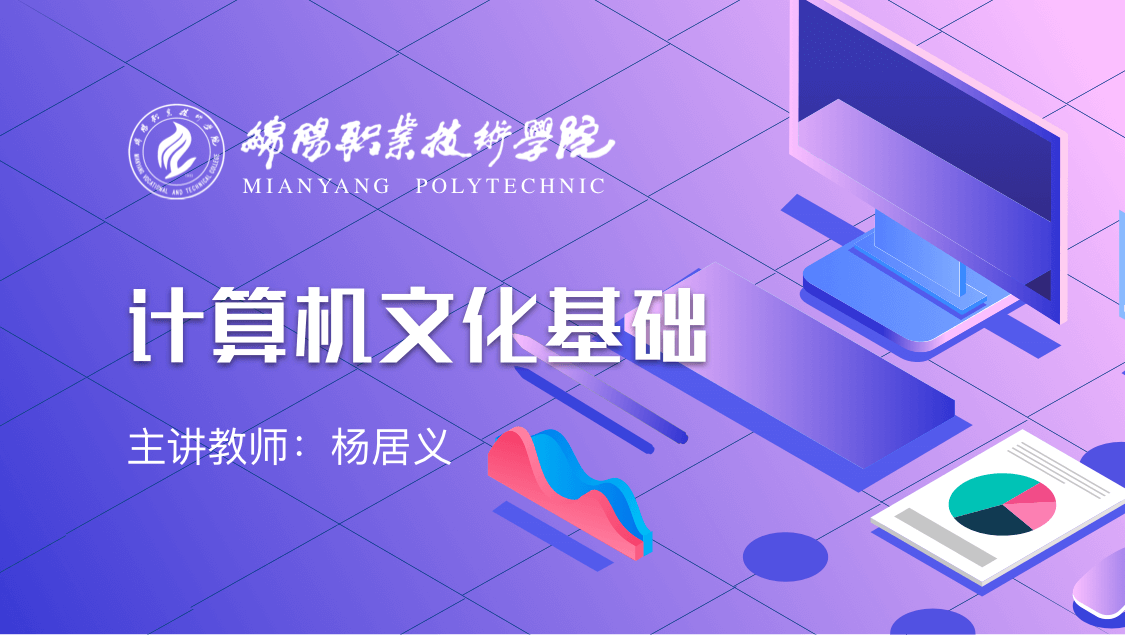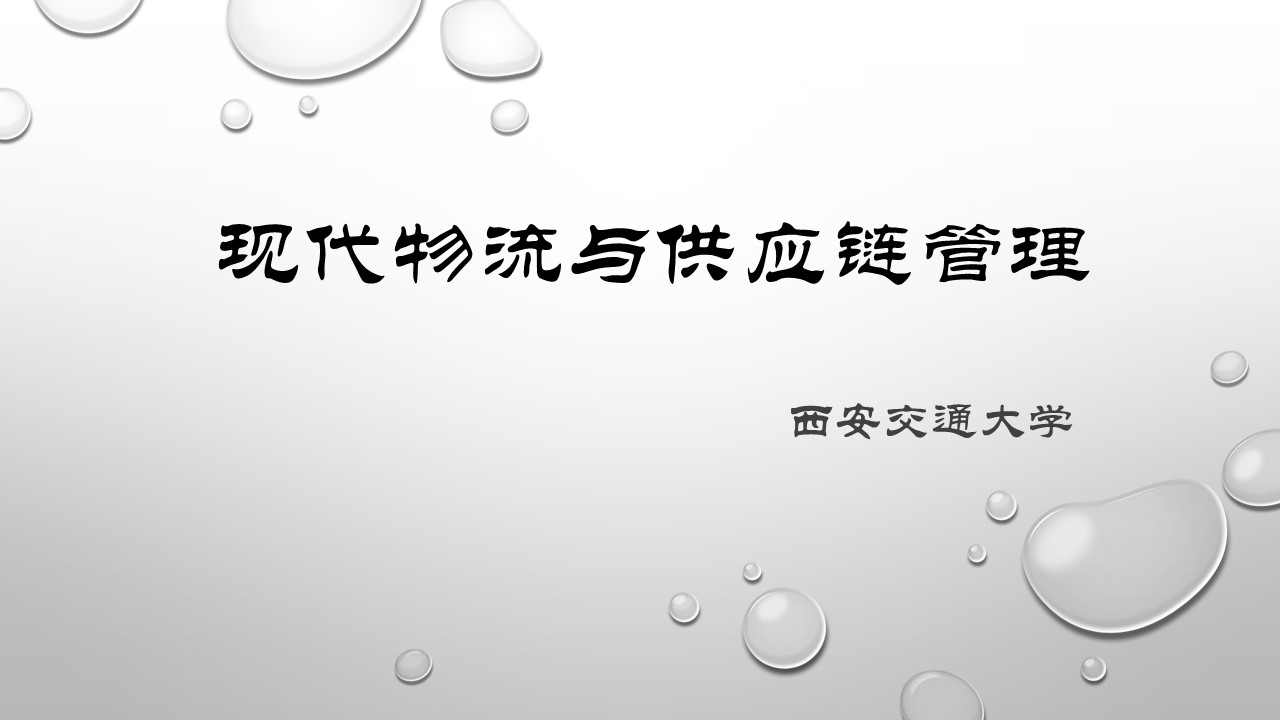
当前课程知识点:Overview of China > 第四章 欣赏中国 Appreciating China > 4.4 书画欣赏 Appreciation of Painting and Calligraphy > 4.4.1 文房四宝及书体 Four Treasures of Study and Calligraphy Style
返回《Overview of China》慕课在线视频课程列表
朋友 您好
Hello friends,
欢迎您 走进中国
Welcome to the Overview of China!
了解更多关于中国的知识
Let's learn more about China.
今天 我们一起来欣赏
Today, let's enjoy
中国书画的艺术美
the artistic beauty of Chinese calligraphy and painting.
书画艺术凝聚着
The art of calligraphy and painting embodies
中华民族的文明和智慧
the civilization and wisdom of the Chinese nation.
在中国自古就有
In ancient China, there was a saying of
书画同源 的说法
same origin of painting and calligraphy
因为书画使用同样的工具
because painting and calligraphy use the same tools.
在笔墨运用上也具有共同的规律性
There is also a common law in the use of pen and ink
都是用简单的形式
Which is simple form,
表现无限变化
Expresses infinite change,
丰富多彩的艺术世界
and color of the art world.
文房四宝 是指
Four Treasures in Chinese studies refers to
中国独有的书法绘画工具
the unique calligraphy and painting tools in China.
分别为笔 墨
They are writing brushes, ink sticks,
纸 砚
paper, and inkstones respectively.
笔
writing brushes
中国传统的书写工具
The traditional writing instrument in China
是毛笔
is a writing brush.
毛笔 相传是由
The writing brush is said to have been invented
战国时期的蒙恬发明的
by Meng Tian during the Warring States Period.
它是用动物的毛
It is made of animal hair
装在竹管或木管里制成的
in bamboo or wood tubes.
不同动物的毛做成的笔
Writing brushes made of fur from different animals
有不同的名称
have different names
如羊毫 狼毫
such as wool brush, wolf brush,
兔毫等
rabbit brush, etc.
根据毫锋长短
According to the length of the brush,
可分为长锋
they can be divided into long,
中锋 短锋
medium, and short brushes.
根据毛笔的性能
According to the performance of the brush,
又可分为柔毫
it can be divided into three types: soft brush
硬毫 兼毫三类
hard brush and doubled both brush.
笔的特性会影响
The characteristics of the pen will affect
书法效果
the calligraphy effect.
如果你想练风格健劲的字
If you want to practice strong style words,
就选用健毫
choose a strong brush.
如果你想练姿媚丰腴的字
If you want to be graceful and plump,
就选用柔毫
choose a soft brush.
如果字体刚柔难分
If the font is hard and soft,
就选用兼毫
choose doubled both brush.
元代以来
Since Yuan Dynasty,
浙江湖州生产的 湖笔
Hubi, produced in Huzhou, Zhejiang Province,
成为全国最著名的毛笔品种
has become the most famous writing brush .
毛笔具有 尖 齐 圆 健
Writing brushes have four characteristics:
四大特点
sharp, neat, round and strong,
也称毛笔 四德
also known as the brush "Four Virtues."
墨
ink sticks
墨是书写绘画的色料
Ink is the pigment for writing and painting.
它是用一块长方柱形
It is made from a rectangular cylinder
或圆柱形的墨锭
or a cylindrical Mo Ding
在砚台里调水磨成的
by mixing water and grinding in an inkstone.
烟是制墨的重要原料
Smoke is an important raw material for making ink.
主要有桐油烟
mainly including lampblack
煤烟和松烟
oil smoke, soot and pine smoke.
墨锭是由烟加上
Mo Ding is made of tobacco
动物胶和香料做成的
animal glue and spices.
由烟墨构成的 水墨画
The ink and wash painting composed of smoke and ink
是中国画特有的一个画种
is a unique kind of Chinese painting.
中国水墨画主张
Chinese ink painting advocates
黑白分明
black and white.
用黑白表现一切
Show everything in black and white.
在黑白对比中使得无色
Though colorless, a black-and-white contrast
产生有色的感觉
produces a colored feeling.
所以
Therefore,
有 墨分五彩 的说法
there is a saying that ink is divided into five colors.
指的是用水调节墨的浓淡
It refers to the use of water to adjust the shade of ink
来表现事物的五色之相
to represent the five colors of things.
墨的浓淡变化就是色的层次变化
The gradation of ink is the gradation of color.
墨色的层次不同
Different levels of ink
可以造成立体感
can create stereoscopic impression.
现在
At present,
人们写字绘画用的墨汁
the ink used by people to write and draw
是厂家调制好的
is prepared by manufacturers.
从瓶子里倒出来
Pour it out of the bottle
就可以直接使用
and use it directly.
省时又方便
Time-saving and convenient,
安徽歙县的 徽墨
Hui ink is the most famous
最为有名
in Shexian county, Anhui province.
徽墨有
Hui ink has the characteristics of
落纸像漆
falling on paper like lacquer,
色泽黑润
black and moist in color,
经久不褪色
durable in color,
闻起来香味浓郁等特点
and rich in fragrance.
纸
Paper
纸 是中国的一项伟大发明
Paper is a great invention in China.
世界上纸的种类很多
There are many kinds of paper in the world
但中国书画艺术所用的纸
but the paper used in Chinese painting and calligraphy
是 宣纸
is Xuan paper.
安徽宣城生产的宣纸
Xuan Paper Produced in Xuancheng, Anhui
质地洁白柔韧
The texture is white and flexible.
不易蛀蚀
It does not easily decay.
久藏不会变色
Long-term storage will not change color
因宣纸吸水性强
because xuan paper has strong water absorption.
所以写在纸上的墨液
Therefore, the ink written on the paper
能呈现出各种神采
can show various spirits.
宣纸自古就有
Xuan paper has long been known as
纸中之王 千年寿纸 的美称
the king of paper and paper with a thousand years of life.
砚
Inkstone
砚 也叫砚台
Inkstone, also called inkstone table
是中国书写绘画研磨的工具
is a grinding tool for Chinese writing and painting.
制作砚台的材料很多
There are many materials for making ink stones.
主要有陶 瓷
There are mainly pottery, porcelain
石 泥 金属 等
stone, mud, metal, etc.
最常见的是石砚
The most common material is stone
广东肇庆的端砚
Duan Yan from Zhaoqing, Guangdong Province
安徽歙县的歙砚
Sheyan in Shexian County, Anhui Province
甘肃洮州的洮河砚
Taohe Inkstone in Taozhou, Gansu Province
山西新绛的澄泥砚
Chengni Inkstone in Xinjiang, Shanxi
被人们称为 四大名砚
Known as the Four Famous Inkstones
许多砚是精雕细琢而成
many inkstones are elaborately carved.
有的还刻出动物和其他的图案
Some are carved with animals and other patterns.
造型美观
The shape is very beautiful.
砚台不仅是文房用具
The inkstone is not only a stationery.
由于其性质坚固
Due to its strong nature,
流传百世而不坏
it was passed through a hundred generations without decaying.
又被历代文人
It was also taken as a rare collector's item
作为珍玩藏品
by scholars of all ages.
现在仍有不少人在收集
Many people are still collecting
研究古砚
and studying ancient inkstones.
古代主要的书写工具
Major Writing Instruments in Ancient Times
是笔 墨 纸 砚
Consisted of: a writing brush, ink, paper, and inkstone.
不过书写时还会用到
However, other instruments included
字帖 镇纸 毛毡
copybook, paperweight, felt
笔洗 笔架
pen washer, pen holder
印盒 图章 等工具
Yin He, stamp and other tools.
随着社会的发展
With the development of society,
又出现了书写灵活
modern writing tools such as pens, which are flexible
方便快捷的钢笔等现代书写工具
convenient and quick to write, have appeared again.
因此 广义的书法
Therefore, calligraphy in a broad sense
也包括硬笔书法
also included hard pen calligraphy.
五种书体
Five Writing Styles
中国书法历史悠久
Chinese calligraphy has a long history.
主要有五种书体
There are mainly five types of books:
篆书 隶书 楷书
Seal script, official script, regular script
草书和行书
cursive script and running script
篆书
Seal script
篆书分为大篆 小篆两类
Seal script is divided into big seal script and small seal script.
大篆主要是指
The seal script mainly refers to
商周时代的甲骨文
the oracle bone inscriptions of Shang and Zhou Dynasties.
钟鼎文和六国古文字等
Zhong Dingwen and Ancient Chinese Characters of Six Countries
小篆是指秦统一中国后
small seal script refers to the official script issued
颁行的法定文字
after Qin unified China.
篆字笔画种类很少
There are very few types of seal character strokes.
字形狭长
The seal character is long and narrow
上部紧密
with a tight upper part
下部舒展
and a stretched lower part.
线条粗细一致
The lines are uniform in thickness.
各笔画之间均匀对称
The strokes are evenly symmetrical
体势以圆为主
and the body is mainly round.
有 左不见撇
There is a saying that "left does not see 'pie'(stroke),
右不见捺 的说法
right does not see 'na'(stroke)."
篆书的代表作有
The representative works of seal script include:
大篆的 石鼓文
Shi Guwen
小篆的 泰山刻石
Mount Tai Stone Carving
代表人物有
Representative figures include:
秦代的李斯
Li si of Qin dynasty
唐代的李阳冰
Li Yangbing in Tang Dynasty
清代的邓石如 吴昌硕等
Deng Shiru and Wu Changshuo in Qing Dynasty
隶书
Official script
在使用篆书的过程中
In the process of using seal script
人们感觉很不方便
People are inconvenienced
于是就把曲画改为直画
so they change the curved stroke to a straight stroke
把圆转变为方折
and the circle to square fold.
成为快速 容易写的新样式
It's become a fast, easy-to-write, new style.
这就是隶书
This is official script
隶书的字形宽扁
The shape of official script is wide and flat.
笔画平直方正
The strokes are straight and square
粗细变化明显
The thickness changes obviously
横画长
The horizontal stroke is long
而竖画短
and the vertical stroke is short.
讲究 蚕头雁尾
Pay Attention to Silkworm Head and Wild Goose Tail
一波三折
and One Wave and Three Folds
唐代隶书
Official script of Tang Dynasty
有 韩择木 蔡有邻
Han Zemu, Cai Youlin
李潮 史惟则 四大家
Li Chao and Shi Weize are four great men.
汉代的蔡邕
Cai Yong in Han Dynasty
清代的金农和邓石如等
Jin Nong and Deng Shiru in Qing Dynasty
都是隶书大家
were all masters of official script.
代表作有
The representative works include:
韩择木的
Han Zemu's
祭西岳神告文碑
Sacrifice to the West Mountain God and Message Tablet
史惟则的 大智禅师碑
Shi Weize's Monument to Zen Master Da Zhi
徐诰的 嵩阳观记
Xu Gao's Song Yang Guan Ji
唐玄宗的 石台孝经
Tang Xuanzong's Shitai Filial Piety Sutra
蔡邕的 熹平石经 等
Cai Yong's Xi Ping Shi Jing, etc
楷书
Regular script
楷书是汉字的主要书体
Regular script is the main style of Chinese characters.
它是从隶书演变而来的
It evolved from official script.
楷书形体方正
Regular script is square in shape,
笔画平直
straight in strokes,
字体端庄
and dignified in fonts.
是现代通行的汉字手写正体字
It is a modern common handwritten Chinese character.
三国时期的钟繇
Zhong Yao in the Three Kingdoms Period
推动了楷书的发展
promoted the development of Regular Script.
被后世尊为
Later generations revered him as
楷书鼻祖
the Originator of Regular Script.
王羲之等人
Wang Xizhi and others
都曾经潜心钻研过他的书法
have studied his calligraphy with great concentration.
钟繇与东晋书法家
Zhong Yao and Wang Xizhi
王羲之
calligraphers of the Eastern Jin Dynasty
并称为 钟王
are called Zhong Wang.
唐代的欧阳询 颜真卿
Ou Yangxun in Tang Dynasty, Yan Zhenqing
柳公权和元代的赵孟頫
Liu Gongquan and Zhao Mengfu in Yuan Dynasty
并称为 楷书四大家
are also known as the Four regular script members.
欧阳询是中国书法史上
Ou Yangxun is the first regular script calligrapher
第一大楷书家
in Chinese calligraphy history.
他的字体被称为 欧体
His typeface is called European style.
用笔刚劲峻拔
The strokes are stiff, vigorous,
笔画方润整齐
smooth and neat.
他的代表作有
His representative works include:
九成宫醴泉铭 等
The Inscriptions of Liquan Ming in Jiucheng Palace, etc.
颜真卿的字体被称为 颜体
Yan Zhenqing's typeface is called Yan Ti
他与柳公权并称为 颜柳
He and Liu Gongquan are also called Yan Liu
被称为 颜筋柳骨
Known as Yan Jin Liu Gu
他的正楷端庄雄伟
His block letters are dignified and majestic.
对中国书法的影响很大
It has a great influence on Chinese calligraphy.
颜真卿的作品有
Yan Zhenqing's works include:
多宝塔感应碑 等
Multi-Pagoda Induction Monument, and so on.
柳公权的字体被称为 柳体
Liu Gongquan's typeface is called Liu Ti.
他常常将部分笔画紧密穿插
He often interweaves some strokes closely.
笔画细劲
The strokes are thin and sharp
棱角峻厉
and the edges and corners are sharp and sharp
显得英气逼人
which makes them appear heroic and aggressive.
他的作品有
His works include
玄秘塔碑 等
The Mysterious Tower Monument, etc.
赵孟頫的字体被称为 赵体
Zhao Mengfu's typeface is called Zhao Ti
作品有 洛神赋卷 等
His works include Luoshen Fu Volume, etc.
行书
Running script
行书是介于楷书和草书之间的一种字体
Running script is a type between regular script and cursive script.
它不像草书那样潦草
It is not scribble like cursive script.
也不像楷书那样端正
Nor is it as regular as regular script.
因此 它弥补了
Therefore,it makes up for
楷书书写速度太慢
the slow writing speed of regular script
和草书难于辨认的缺点
and the cursive script is difficult to recognize.
实质上
In fact,
行书是楷书的草化或者草书的楷化
running script is a cursive script or a regular script.
相比较而言
In comparison,
楷书实用性高些
regular script is more practical,
草书艺术性高些
cursive script is more artistic,
而行书则兼具有实用性和艺术性
while running script is both practical and artistic.
东晋书法家王羲之的
Preface to Orchid Pavilion by Wang Xizhi
兰亭序
a calligrapher of the Eastern Jin Dynasty.
被誉为 天下第一行书
Known as the world's first running script,
他的字雄强俊秀
his handwriting is strong and handsome.
唐代颜真卿的
Tang Dynasty Yan Zhenqing's
祭侄稿
Sacrifice to Nephews
写得劲挺奔放
The writing is vigorous and unrestrained.
被称为
It is called
天下第二行书
the second running script in the world.
苏轼的 黄州寒食帖
Su Shi's Huang Zhou Han Shi Tie
则被称为
It is called
天下第三行书
the third running script in the world.
兰亭序
Preface to Orchid Pavilion
是雅士超人的风格
is the style of elegant scholars.
祭侄稿
Offering Sacrifices to Nephews
是圣哲贤达的风格
is the style of sages.
寒食帖 是学士才子的风格
Cold Food Post is the style of a gifted scholar.
它们各领风骚
They all lead the way.
成为中国书法史上
Becomes Three Milestones of Running Script
行书的三块里程碑
in Chinese Calligraphy History.
此外
In addition,
唐代的李邕
Li Yong of the Tang Dynasty
宋代的黄庭坚
Huang Tingjian of Song Dynasty
米芾 蔡襄
Mi Fu, Cai Xiang
元代的赵孟頫
Zhao Mengfu in Yuan Dynasty
明代的董其昌
Dong Qichang in Ming Dynasty
清代的刘墉
Liu Yong in Qing Dynasty
近现代的于右任 启功等
Modern Yu Youren, Qi gong, etc
都擅长行书
All are good at running script.
有不少作品传世
There are many works handed down.
草书
Cursive script
草书看上去潦草难认
The cursive looks illegible
但并不是随意乱写的
but it's not random
而是按照一定的规律
It is written according to a certain rule
连笔书写
with joined-up strokes
简省笔画
It simplifies the strokes,
假借偏旁
and borrows the radicals of characters.
草书的艺术性很强
Cursive is very artistic
它的审美价值远远超过了实用价值
Its artistic value far exceeds its practical value.
唐代的草书
The overall standard of cursive script
总体水平最高
in the Tang Dynasty was the highest.
代表人物有
Representative figures included
怀素和张旭等
Huai Su and Zhang Xu, etc.
怀素的草书笔力刚劲 活泼
Huai Su's cursive script is vigorous and lively.
结构富有动感
The structure is dynamic,
像是节奏分明的音乐旋律
like a rhythmic musical melody.
他的 自叙帖
His Self-narrative Post
是中国草书史上的一座高峰
was a peak in the history of cursive script in China.
张旭也擅长草书
Zhang Xu was also good at cursive script
并且喜欢饮酒
and liked drinking.
世称 张颠
He was known as Zhang Dian
与怀素并称 颠张醉素
He and Huai Su were collectively called “Dian Zhang Zui Su”.
他的草书与李白的诗歌
His cursive script, Li Bai's poems and songs
裴旻的剑舞
and Pei Min's sword dance
并称为 三绝
are also called Three Unique Skills.
张旭勤于观察客观事物
Zhang Xu was diligent in observing objective things
善于将客观的自然物象
and was good at combining objective natural images
与个人的主观情感结合起来
with personal subjective feelings.
使狂草艺术在盛唐时期
The art of wild cursive reached a peak
达到了一个高峰
in the prosperous Tang Dynasty.
他的作品有 古诗四帖
His works include Four Ancient Poems
肚痛帖 等
and Abdominal Pain.
此外
In addition,
东汉的张芝
Zhang zhi of the Eastern Han dynasty
东晋的王羲之
Wang Xizhi of Eastern Jin Dynasty
王献之父子
his son Wang Xianzhi
宋代的黄庭坚
Huang Tingjian in Song Dynasty
明代的董其昌
Dong Qichang in Ming Dynasty
清代的傅山
Fu Shan in Qing Dynasty
近代的于右任 林散之等
Modern Yu Youren, Lin Sanzhi, etc
都是非常有名的草书大家
they are all very famous cursive writers.
五种书体中
Of the five types of books
篆书和隶书
seal script and official script
如今只在书法艺术中使用
are now only used in calligraphy,
而楷书 行书
while regular script, running script
和草书
and cursive script
则是现在人们日常生活中所常用的字体
are now the fonts commonly used in people's daily life.
好
Ok
关于中国文房四宝和汉字书体
That's all for the the Four Treasures of the Study
我们先欣赏到这里 谢谢
we will appreciate here, thank you.
-1.1 初识中国 First acquaintance of China
--1.1 初识中国 First acquaintance of China
-1.2 人文中国 Humanistic China
-1.3 美丽中国 Beautiful China
-1.4 绿色中国 Green China
-1.5 民俗中国 Folklore China
-小测验 Quiz
-2.1 畅行中国 Unimpeded China
--2.1.1 中国交通方式 China's mode of transportation
--2.1.2 中国著名人文景观 Famous cultural landscape in China
--2.1.3 中国著名自然景观 Famous natural landscape in China
-2.2 乐居中国 Happy living in China
--2.2.1 中国传统官式建筑 Traditional Chinese official architecture
--2.2.2 中国传统民居 Traditional Chinese houses
--2.2.3 中国现代城镇的发展 The development of modern towns in China
-2.3 食在中国 Eating in China
-2.4 穿在中国 Wear in China
-2.5 医在中国 Medicine in China
-小测验 Quiz
-3.1 中国历史 Chinese History
--3.1.1.走向大一统的中华文明 Towards the unification of Chinese civilization
--3.1.2 多民族融合的封建帝国 A multi-ethnic feudal empire
--3.1.3 日新月异的和平中国 Peaceful China changing with each passing day
--小测验 Quiz
-3.2 中国科技 China‘s Science and Technology
--3.2.1 中国古代四大发明 Four great inventions in ancient China
--3.2.2 中国古代数学和天文学 Ancient Chinese mathematical astronomy
--3.2.3 古代青铜器和农业科技 Ancient bronzes and agricultural technology
--3.2.4 中国新四大发明 Four new inventions in China
--3.2.5 国防与民生科技 National defense and people's Livelihood Science and technology
--3.2.6 中国航空航天 China Aerospace
--小测验Quiz
-3.3 中国经济 China's Economy
--3.3.1 中国古代农业和手工业 Ancient Chinese agriculture and handicraft industry
--3.3.2 中国古代商业 Ancient Chinese Commerce
--3.3.3 中国现代经济政策和体制 China's modern economic policy and system
--3.3.4 中国经济发展的成就 Achievements in China's economic development
--3.3.5 中国经济发展的新趋势 The new trend of China's economic development
--小测验Quiz
-3.4 中国教育 Education in China
--3.4.1 古代哲学和教育思想 Ancient philosophy and educational thought
--3.4.2 古代学校教育 Ancient school education
--3.4.3 科举制度 Imperial examination system
--3.4.4 扫盲运动与高考 Literacy campaign and college entrance examination
--3.4.5 中国现代教育体系 China's modern education system
--3.4.6 国际教育交流与合作 International educational exchange and cooperation
--小测验Quiz
-4.1 文学欣赏 Literary Appreciation
--4.1.1 《诗经》和《离骚》Book of Songs and Li Sao
--4.1.2 诸子散文 Philosophical Prose
--4.1.3 唐诗宋词 Chinese Tangsong Poetics
--4.1.4 四大名著 Four Masterpieces
--4.1.5 中国现代文学 Modern Chinese Literature
--4.1.6 中国当代文学 Contemporary Chinese Literature
--小测验 Quiz
-4.2 音乐欣赏 Music Appreciation
--4.2.1 中国传统音乐与乐器 Traditional Chinese Music and Musical Instruments
--4.2.2 中国古典十大名曲 Ten Famous Classical Chinese Songs
--4.2.3 五彩缤纷的现代音乐 Colorful Modern Music
--小测验 Quiz
-4.3 戏曲欣赏 Opera Appreciation
--4.3.2 豫剧和其他地方戏 Henan Opera and Other Local Operas
--4.3.3 皮影戏和样板戏 Shadow Play and Model Play
--小测验 Quiz
-4.4 书画欣赏 Appreciation of Painting and Calligraphy
--4.4.1 文房四宝及书体 Four Treasures of Study and Calligraphy Style
--4.4.2 书法艺术习成及名家名作 Calligraphy and Masterpieces
--4.4.3 中国画的工具及分类 Tools and Classification of Chinese Painting
--4.4.4 中国绘画名家名作 Famous Works of Chinese Painters
--4.4.5 中国书画艺术思想 The artistic Thought of Chinese Painting and Calligraphy
--小测验 Quiz
-4.5 影视欣赏 Film Appreciation
--4.5.3 20世纪90年代至今中国电影欣赏 Chinese film appreciation since 1990s
--小测验 Quiz
-4.6 武术欣赏 Chinese Martial Arts Appreciation
--4.6.1 中国武术的源流与发展 The Origin and Development of Chinese Martial Arts
--4.6.2 中国武术流派 Chinese Martial Arts schools
--4.6.3 十八般武器 18 Weapons of Martial Arts
--4.6.4 中国武术文化欣赏 Appreciation of Chinese Martial Arts Culture
--小测验 Quiz
-5.1 源远流长的古代中外交流 Ancient exchanges between China and foreign countries
--5.1源远流长的古代中外交流 Ancient exchanges between China and foreign countries
-5.2 丰富多彩的现代中外交流 Rich and colorful modern exchanges between China and foreign countries
--5.2 丰富多彩的现代中外交流 Rich and colorful modern exchanges between China and foreign countries
-小测验 Quiz
-期末考试 Final Examination
--期末考试 Final Examination


